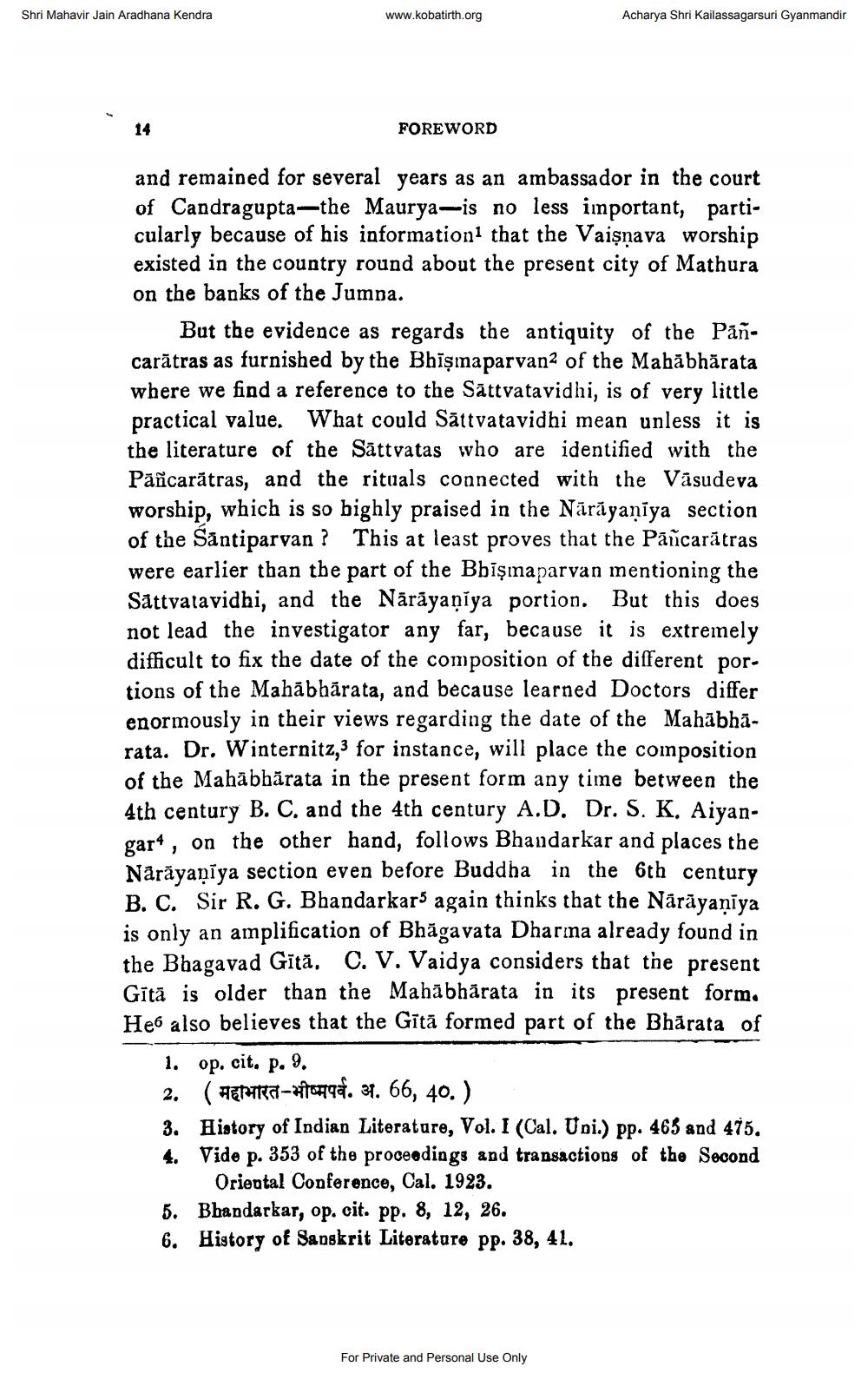________________
Shri Mahavir Jain Aradhana Kendra
14
www.kobatirth.org
FOREWORD
1. op. cit. p. 9.
and remained for several years as an ambassador in the court of Candragupta-the Maurya-is no less important, particularly because of his information1 that the Vaiṣṇava worship existed in the country round about the present city of Mathura on the banks of the Jumna.
But the evidence as regards the antiquity of the Pancaratras as furnished by the Bhişmaparvan2 of the Mahabharata where we find a reference to the Sattvatavidhi, is of very little practical value. What could Sattvatavidhi mean unless it is the literature of the Sattvatas who are identified with the Pañcaratras, and the rituals connected with the Vasudeva worship, which is so bighly praised in the Nārāyaṇīya section of the Santiparvan ? This at least proves that the Pancarātras were earlier than the part of the Bhişmaparvan mentioning the Sattvatavidhi, and the Nārāyaṇīya portion. But this does not lead the investigator any far, because it is extremely difficult to fix the date of the composition of the different portions of the Mahabharata, and because learned Doctors differ enormously in their views regarding the date of the Mahabharata. Dr. Winternitz,3 for instance, will place the composition of the Mahabharata in the present form any time between the 4th century B. C. and the 4th century A.D. Dr. S. K. Aiyangar, on the other hand, follows Bhandarkar and places the Nārāyaṇīya section even before Buddha in the 6th century B. C. Sir R. G. Bhandarkar5 again thinks that the Nārāyaṇīya is only an amplification of Bhagavata Dharma already found in the Bhagavad Gită. C. V. Vaidya considers that the present Gītā is older than the Mahabharata in its present form. He also believes that the Gītā formed part of the Bharata of
( महाभारत - भीष्मपर्व. अ. 66, 40. )
Acharya Shri Kailassagarsuri Gyanmandir
2.
3. History of Indian Literature, Vol. I (Cal. Uni.) pp. 465 and 475. 4. Vide p. 353 of the proceedings and transactions of the Second Oriental Conference, Cal. 1923.
5. Bhandarkar, op. cit. pp. 8, 12, 26.
6. History of Sanskrit Literature pp. 38, 41.
For Private and Personal Use Only




